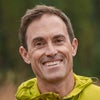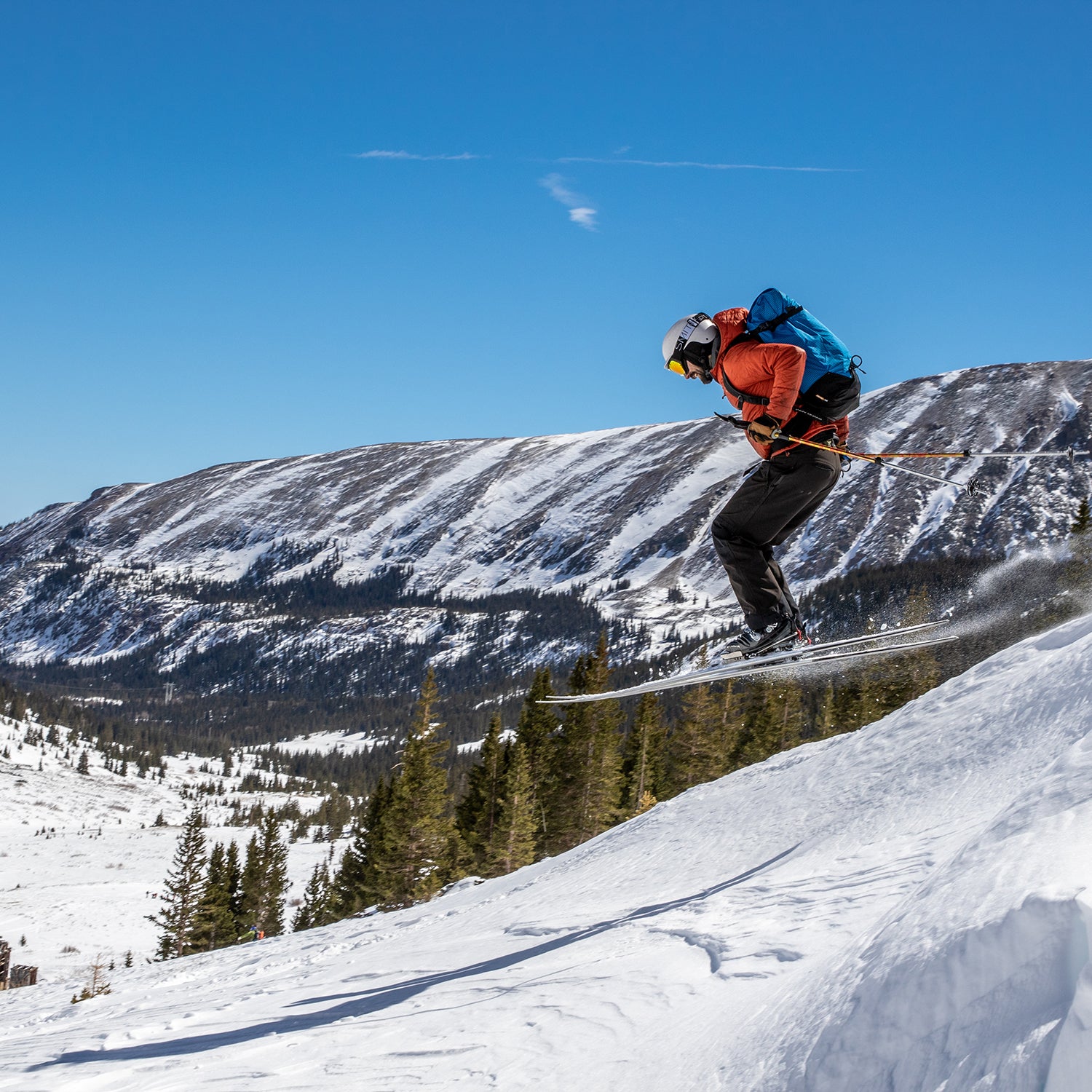Back in March, I made the case that skiing could benefit from a handful of backcountry ski areas that donÔÇÖt feature any lifts but offer gear rentals, educational opportunities, varied terrain, andÔÇöthis was the controversial partÔÇöavalanche-mitigation work, including bombs. For those who┬áactually read the piece┬áas opposed to weighing in blindly on social (Russian bots), the conceit might have seemed pretty far out there, even for a mouthy and opinionated Masshole-bred blowhard like me.
Turns out it wasnÔÇÖt that much of a stretch. A few days after that column went up, Erik Lambert and Jeff Woodward, the cofounders of a new company called , reached out to let me know that they were gearing up for their┬áfirst of several prototype sessions testing a backcountry ski-area concept eerily similar to the one I proposedÔÇöminus the bombing as of yet, but thatÔÇÖs the dream scenario. A permanent home for the project has not been settled on, but over two March weekends on , Colorado, Bluebird took 100 skiersÔÇöit was all human poweredÔÇöinto the high country, where they tested everything from skin-track logistics (two parallel tracks make┬áfor easier instruction)┬áto cost ($50 is the sweet spot for the amount of services rendered) to sustenance (they set up a skin-track bacon station┬áand fried up ten poundsÔÇÖ worth to distract newbies from the uphill suffering). For this prototype event, Bluebird hired guides to lead the groups. It wasnÔÇÖt a free-for-all.
Then, on April 10, Bluebird announced its next pop-up session, to be held┬áApril 27 and 28 on 200 acres at ColoradoÔÇÖs Winter Park ski area after the resort closes for the season. Winter Park will be another test of the ÔÇťin-bounds backcountryÔÇŁ model Bluebird is proving has merit.
To be clear, the Mosquito Pass and Winter Park events are just test runs: BluebirdÔÇÖs stated goal, though, is an┬áÔÇťavalanche-controlled and ski-patrolled ski area thatÔÇÖs 100-percent┬áhuman powered.ÔÇŁ Lambert and Woodward, who have quietly been working on the endeavor for two and a half years, say their hope is to eventually offer backcountry skiing on multiple permanent sites throughout the U.S.┬áÔÇťWe believe the demand exists to have a number of locations across the country, and that U.S. ski culture will morph as a result,ÔÇŁ Lambert says. ÔÇťBackcountry skiing is a cultural shift.ÔÇŁ┬á
Mosquito Pass was a proof-of-concept exercise that also helped them refine their approach. ÔÇťWhat we were doing there was incredibly detailed observation,ÔÇŁ says Woodward, who has a background in the tech-startup world. ÔÇťIn addition to the guests, we had 25 volunteers taking notes on pain points and logistics. Of the 336 observations that weÔÇÖre now analyzing, we made 44 adaptations from day one to day four. We were learning what people are looking for.ÔÇŁ
Mosquito Pass was a natural choice for the prototyping session because of its terrain and proximity to Denver. But it might be primed to become a backcountry ski area for another reason: an existing, if long neglected, base structure. Beneath Mosquito Peak, an outfit dubbed ┬áis currently restoring an old mill site on leased property, with the hopes of having a backcountry hut operational in the next two years. Before they┬ágot invested in the historic-preservation component of the site, which is now well underway, NoLo founders Jeff Crane and Kate McCoy had planned to run their own backcountry ski area, complete with avalanche control if it made sense. After collaborating with Bluebird, theyÔÇÖre seeing another potential path forward.
ÔÇťThey have an idea, and they were looking for a place to test it,ÔÇŁ says Crane. ÔÇťWe have a place, but the idea of what it will become is changing. I think what weÔÇÖll do is work with a variety of guides including Bluebird, Colorado Mountain School,┬á, and the like.ÔÇŁ
NoLo and BluebirdÔÇöand, yeah, meÔÇöshare a vision of opening up the sport of backcountry skiing and splitboarding to more users. Some of them might be newbies who donÔÇÖt have a mentor to ease their entry into the sport, others might be seasoned tourers looking to take kids or family out in mitigated terrain far from ski-resort infrastructure, still more might be recruited from the ground swell of resort uphillers, and others yet might be experts looking for a place to ski during high-hazard avalanche conditions in the more exposed backcountry.
BluebirdÔÇÖs Lambert draws an analogy to what indoor walls have done for climbing. ÔÇťUntil the gyms came along, there was no easy entry point for would-be climbers,ÔÇŁ he says. ÔÇťIf you didnÔÇÖt know somebody that climbed, you werenÔÇÖt going. Climbing needed safe places to go, creature comforts like toilets, and instruction on a basic level. ThatÔÇÖs where these backcountry ski areas come in. Backcountry skiing, though, is 30 years behind climbing.ÔÇŁ
All this is in keeping with a third push by the town┬áof Aspen, Colorado, to shift itself to a human-powered hub for resort uphillers, mountain bikers, trail runners, nordic skiers, and traditional backcountry skiers, too. (Advocates have been in touch with Bluebird Backcountry as well.) The town has even gone so far as to build the to make those goals more tangible. ÔÇťThereÔÇÖs such a surge of folks that are interested in backcountry skiing now,ÔÇŁ says Kent Sharp, president of the SE Group, which consults with and devises strategies for ski areas and towns in their dealings with public land managers. ÔÇťPart of that trend is great, part of itÔÇÖs terrifying. Nobody wants to see people in the backcountry who as of yet have no business there. ItÔÇÖs even scarier to think of them following a buddy who isnÔÇÖt as experienced as he or she claimed. ItÔÇÖs not an irretrievable commitment of resources to build such a place and see how it goes for a few years. You can remove the infrastructure in a few days, and youÔÇÖre right back to pristine national forest.ÔÇŁ
Judging by the photos, BluebirdÔÇÖs test of concept was a smashing success. An astounding 35 of the 100 guests were first-time backcountry skiers. And if the business model plays out as planned, with the possibility of┬áincluding rentals┬áand other services that nascent backcountry skiers might need, they believe the operation will be successful. ÔÇťOur hope is not only to provide controlled places for this sport to grow,ÔÇŁ says Lambert, ÔÇťbut to revolutionize the educational flow of backcountry skiing, help new users understand the human factors involved, and develop a mountain sense. There will be some people that love the safe experience and return just for that. Others will use it as a stepping stone to get into the true backcountry. We recognize that backcountry skiing isnÔÇÖt for everyone, but it should be open to more people.ÔÇŁ┬á
And that (which you, dear reader, have long since gleaned, having actually read both of these stories) was exactly my point with that original column. But all this will be lost on the trolls that love to hate but hate to read.
If skiing in the backcountry interests you but, beyond taking your Avalanche 1 class, you donÔÇÖt know where to start, head to and fill out its┬ásurvey (2,000 respondents and counting).


